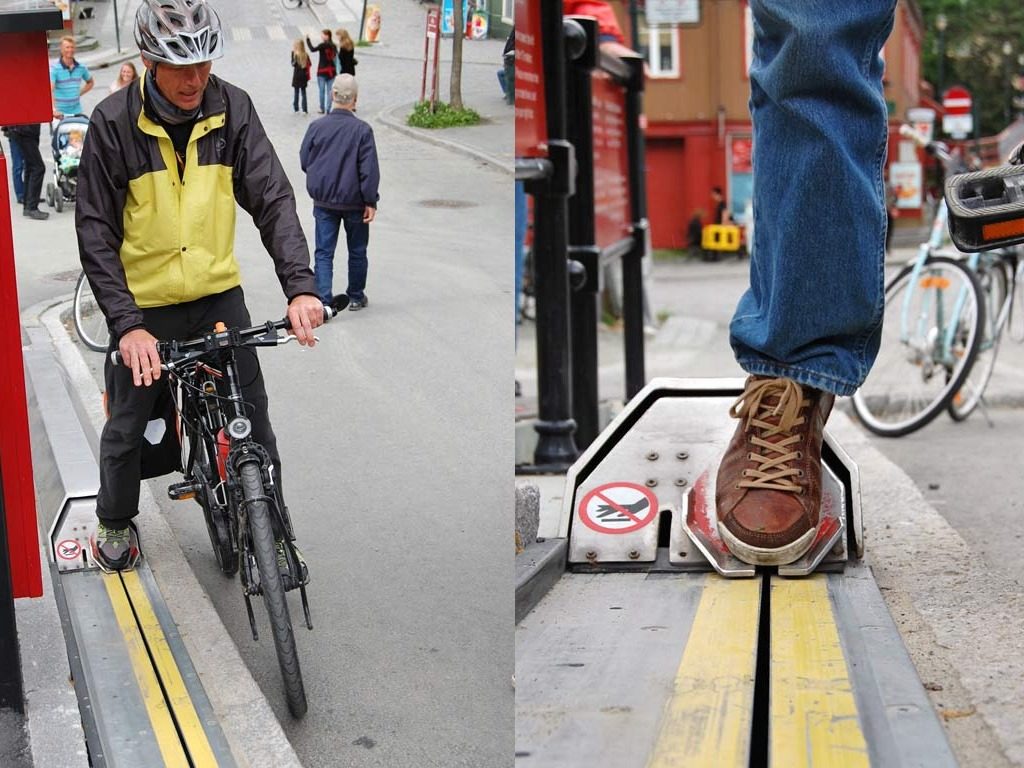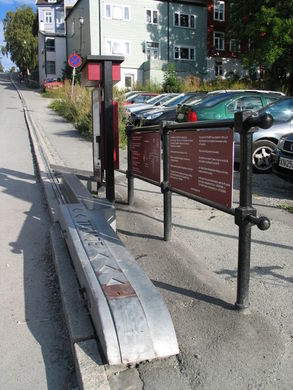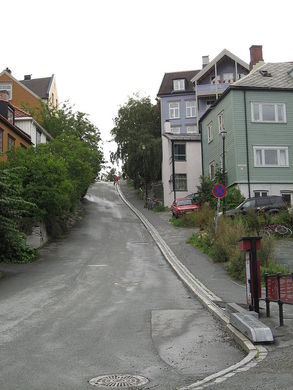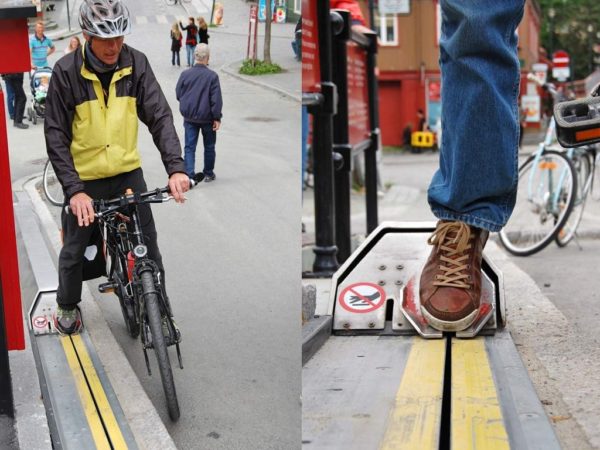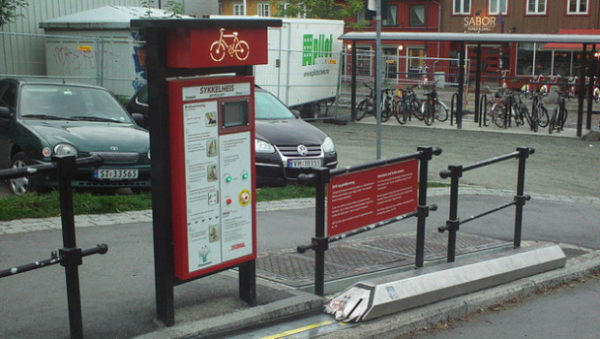It is relaxing…
Imagine you’re riding your bike through town. You want to visit a vantage point and enjoy the view over your city in the best sunshine. But there is still a small climb ahead of you, only 130 meters, but a tough task with an 18 percent gradient. A drop or two of sweat will accompany you as you enjoy the view. But then it happens – you put your right foot in and are pulled up the hill by machine, without using the pedals. Sounds funny – but so it is…
In the Norwegian city of Trondheim this has been reality since 1993. The industrial designer Jarle Wanvik didn’t want to be deterred by the Trondheim hills and still ride a bicycle and, inspired by the system of ski lifts, invented a bicycle lift. Just at that time, Trondheim‘s administration decided to invest 20 million Norwegian Kroner (2.3 million Euros) in the development of cycle paths. Wanvik was able to convince the city of his development and so the construction of the Sykkelheisen Trampe on Trondheim’s Brubakken hill began.
…it is unique…
Almost 20 years after its opening, the lift was renovated in 2013 and the now called CycloCable was supposed to become an export hit for hilly cities worldwide (e.g. San Francisco). Despite, according to the operators, continuous freedom from accidents, the project has not yet found any imitators. The main reason for this are the booming e-bikes, which are taking away the breeding ground of the expensive bicycle lift with investment costs of more than 2,000 Euros per meter.
…but it is not simple
Today, the bicycle lift, which acts more as a tourist attraction, registers between 20 and 30 thousand users per year. A ride, which is only possible upwards, takes a little more than one minute and is free of charge, but not without effort. The user places himself, sitting on the saddle and slightly bent forward, with the bicycle to the left of the plate. When the lift starts, the user, standing with his right foot on the footrest, pushes the bike up the road. It is mainly the right leg that has to be loaded, as only this leg is pushed while the wheel is stabilized with the left leg. To compensate for the counter pull of the bike, it is advisable to push the handlebars of the bike forwards with the arms. Only the support of the body on both arms and legs results in a stable body position, which must be maintained by means of body tension during the ride. Despite the practice needed young people and elderly alike are actually able to manage the ride upwards as you can see in the video.
The speed of the bicycle lift is 7.4 km/h, which corresponds to about two m/s. The ascent technique must be practiced. Longer journeys with such a lift can be exhausting due to the one side load.
Should I ever end up in Trondheim, I am already looking forward to my ride with the CycloCable.
